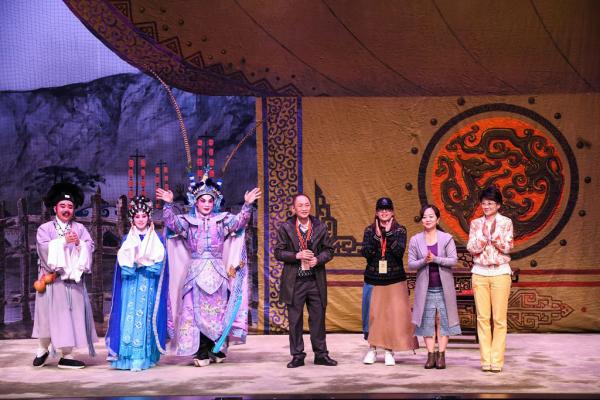KID REPORTERS’ NOTEBOOK
Exploring the Origins of Cantonese Opera


Lui Hung-kwong, program director of The Cantonese Opera Academy of Hong Kong, at a showcase for rising opera singers
During the pandemic, kids around the world have spent a lot of time learning through online platforms, playing video games, and watching movies. I began to wonder what people did for fun before iPhones and laptops were invented.
After conducting research, I learned that Cantonese opera was the top form of entertainment in China for centuries. With singing and spoken lines delivered in the Cantonese dialect, Cantonese opera is one of several operatic genres that originated in the Guangdong province in southern China. In 2009, it was inscribed on UNESCO’s “List of the Intangible Cultural Heritage of Humanity.” (UNESCO stands for United Nations Educational, Scientific, and Cultural Organization.)
Brian in the studio with Lui Hung-kwong
To learn more about the art form, I spoke with Lui Hung-kwong, program director of the Cantonese Opera Academy of Hong Kong. He is also a well-known performer whose career began in the 1960s. Here are highlights from our conversation, which has been edited for brevity and clarity.
How did performers stage their work before mass transportation was invented?
From the 19th century through the early 20th century, opera troupes would perform along the Pearl River Delta in southern China. They lived on boats that were painted red and transported them to various temple festivals during the performance season. A troupe typically stayed in a city for a few days, performing different repertoires on temporary stages each day. By the 1930s, the major performing venues for Cantonese opera had moved to big cities, and more convenient forms of transportation became available. As a result, the red boats began to disappear.
What are the distinctive characteristics of Cantonese opera?
In each opera production, the story is told through the “four basic skills” of singing, acting, delivery of spoken lines, and martial arts. These are enhanced by stage makeup, costumes, props, and the percussive beats on gongs and drums. The performance is a mix of literature, drama, ballad singing, dance, and martial arts.
How can kids in my generation connect with this ancient art form?
Cantonese opera is supposed to mirror real life. But our lives today differ greatly from the stories told in the opera. Older generations read the same stories, listened to them on the radio, and saw them in operatic performances at night. It was like pop culture to them.
In order to attract new generations, our organization hosts programs and workshops for students. This allows them to experience the essence of Cantonese opera. Participants also write Cantonese operas, but with themes that will resonate with kids today. To cite one example, a fairy fails his exams and is exiled to Earth, where he must learn from human children. We hope opportunities like these will help young people connect to their artistic heritage and share it with their families.
